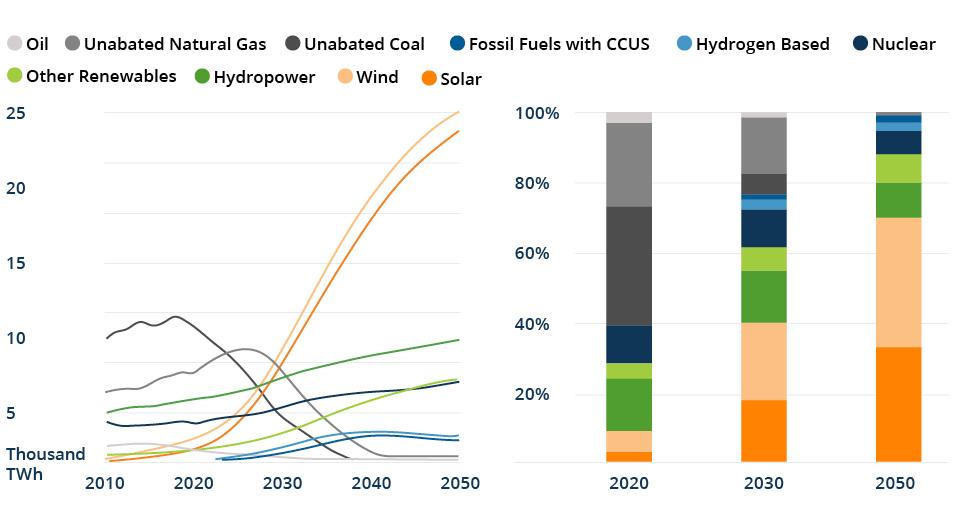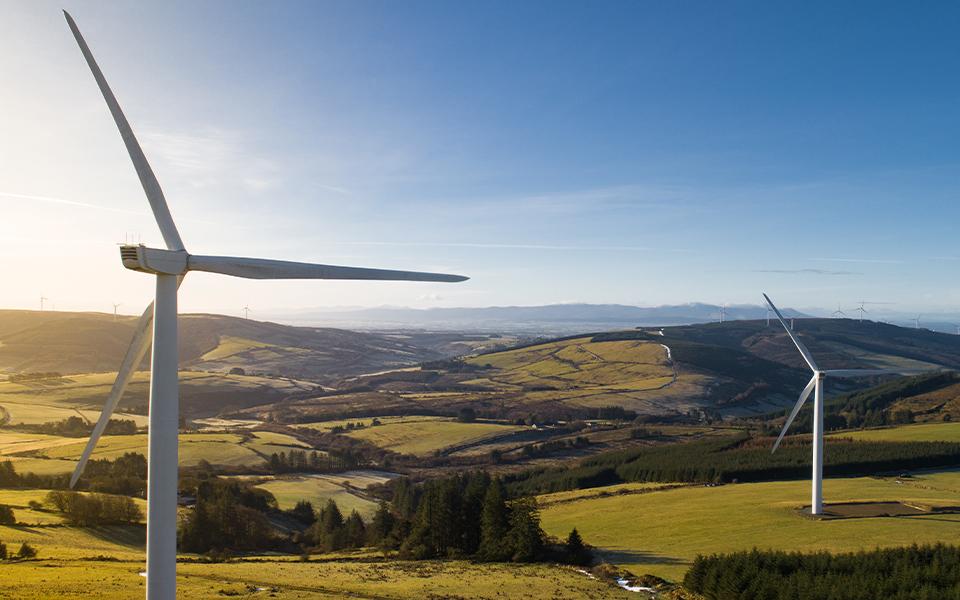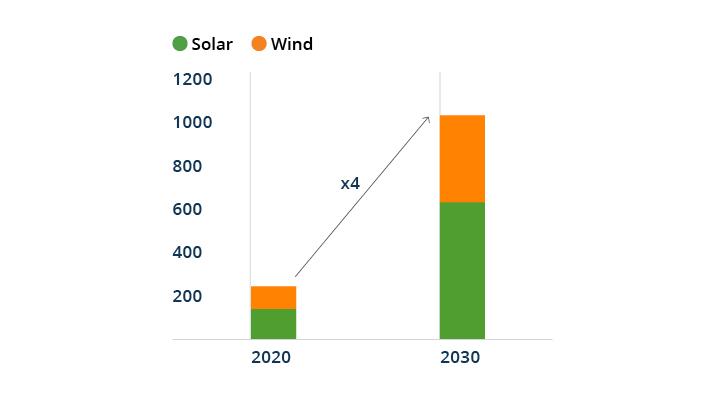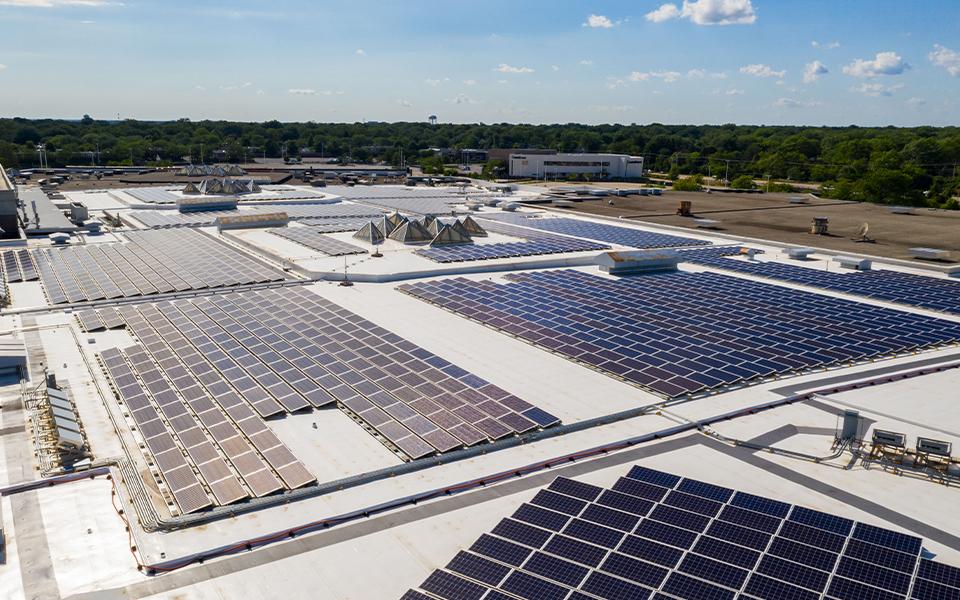Endnotes:
1. IPCC Interactive Atlas.
2. World Resources Institute, Interactive Chart; data from Climate Watch.
3. U.S. Department of Energy’s National Renewable Energy Laboratory, Electrification Futures Study, July 2018.
4. IEA, “Pathway to critical and formidable goal of net-zero emissions by 2050 is narrow but brings huge benefits,” May 2021.
5. IEA, “Net Zero by 2050,” May 2021.
6. Bloomberg, Building New Renewables Is Cheaper Than Burning Fossil Fuels, June 23, 2021.
7. References to “carbon” are generally being used in place of “carbon dioxide equivalent” (CO2e), which includes other greenhouse gases such as methane, nitrous oxide, etc.
8. Financial Times, “Biden plans push to enact clean electricity standard,” June 30, 2021.
9. Toronto Star, “How Bill C-12 aims to guide Canada to net zero,” June 30, 2021.
10. Amazon, “Amazon Becomes Largest Corporate Buyer of Renewable Energy in the U.S.,” June 23, 2021.
11. Facebook, “Achieving our goal: 100% renewable energy for our global operations,” April 15, 2021.
12. BASF, “Vattenfall to sell 49.5% of the offshore wind farm Hollandse Kust Zuid to BASF,” June 24, 2021.
13. International Renewable Energy Agency, “World Adds Record New Renewable Energy Capacity in 2020,” April 5, 2021.
14. IEA, “Global carbon dioxide emissions are set for their second-biggest increase in history,” April 20, 2021.
15. IEA, “Pathway to critical and formidable goal of net-zero emissions by 2050 is narrow but brings huge benefits,” May 18, 2021.
16. The White House, “FACT SHEET: Historic Bipartisan Infrastructure Deal,” July 28, 2021.
17. The White House, “FACT SHEET: The American Jobs Plan,” March 3, 2021.
18. Global Industry Analysts, Distributed Generation (DG) Global Market Trajectory & Analytics, August 2021
19. Bloomberg, “Solar is Dirt-Cheap and About to Get Even More Powerful,” July 6, 2021.
20. U.S. Energy Department, “Wind Repowering Helps Set the Stage for Energy Transition,” June 2, 2021.
21. Financial Times, “US offshore wind projects test strength of Joe Biden’s green jobs promise,” May 12, 2021.
22. New York Times, “Biden Administration Approves Nation’s First Major Offshore Wind Farm,” May 12, 2021.
23. Wood Mackenzie, “Americas to lead global energy storage market by 2025,” April 20, 2021.
24. Wood Mackenzie, “Americas to lead global energy storage market by 2025,” April 20, 2021.
25. U.S. Energy Information Administration, “U.S. large-scale battery storage power capacity increased 35% in 2020,” Aug. 16, 2021.
26. Bloomberg, “California’s Solar Industry Is Getting Sunburned,” March 11, 2021.
27. Amazon, “Amazon Becomes Europe’s Largest Corporate Buyer of Renewable Energy," April 19, 2021.
28. Apple, “Apple powers ahead in new renewable energy solutions with over 110 suppliers,” March 31, 2021.
29. Wall Street Journal, “Startup Claims Breakthrough in Long-Duration Batteries,” July 22, 2021.
30. Bloomberg, “The Hidden Science Making Batteries Better, Cheaper and Everywhere,” April 27, 2021.
31. Wall Street Journal, “The Battery Is Ready to Power the World,” Feb. 5, 2021.
32. Wall Street Journal, “Natural Gas, America’s No. 1 Power Source, Already Has a New Challenger: Batteries,” May 16, 2021.
33. Bloomberg, “The Hidden Science Making Batteries Better, Cheaper and Everywhere,” April 27, 2021.
34. U.S. Energy Information Administration, “Hydrogen explained,” Jan. 7, 2021.
35. Naturgy, “Naturgy presents its strategic plan for the period to 2025 with investments of 14 billion to strengthen its role in the energy transition,” July 28, 2021.
36. European Commission, “A hydrogen strategy for a climate-neutral Europe,” July 8, 2021.
37. European Commisison, “In focus: Hydrogen – driving the green revolution,” April 14, 2021.
38. Gas for Climate, “European Hydrogen Backbone grows to 40,000 km, covering 11 new countries,”, April 13, 2021.
39. European Commission website, “EU climate action and the European Green Deal.”
40. Hydrogen Council, “Hydrogen Investment Pipeline Grows to $500 Billion in Response to Government Commitments to Deep Decarbonization,” July 2021.
41. BloombergNEF, “Green Hydrogen to Outcompete Blue Everywhere by 2030,” May 5, 2021.
42. Nel, “Nel CMD 2021: Launches 1.5 USD/kg target for green renewable hydrogen to outcompete fossil alternatives,” Jan. 21, 2021.
43. U.S. Dept. of Energy, “Secretary Granholm Launches Hydrogen Energy Earthshot to Accelerate Breakthroughs Toward a Net-Zero Economy,” June 7, 2021.
44. Standard & Poor’s, “Experts explain why green hydrogen costs have fallen and will keep falling,” March 5, 2021.
45. Wall Street Journal, “We Need a Better Grid and Better Policies,” March 4, 2021.



















